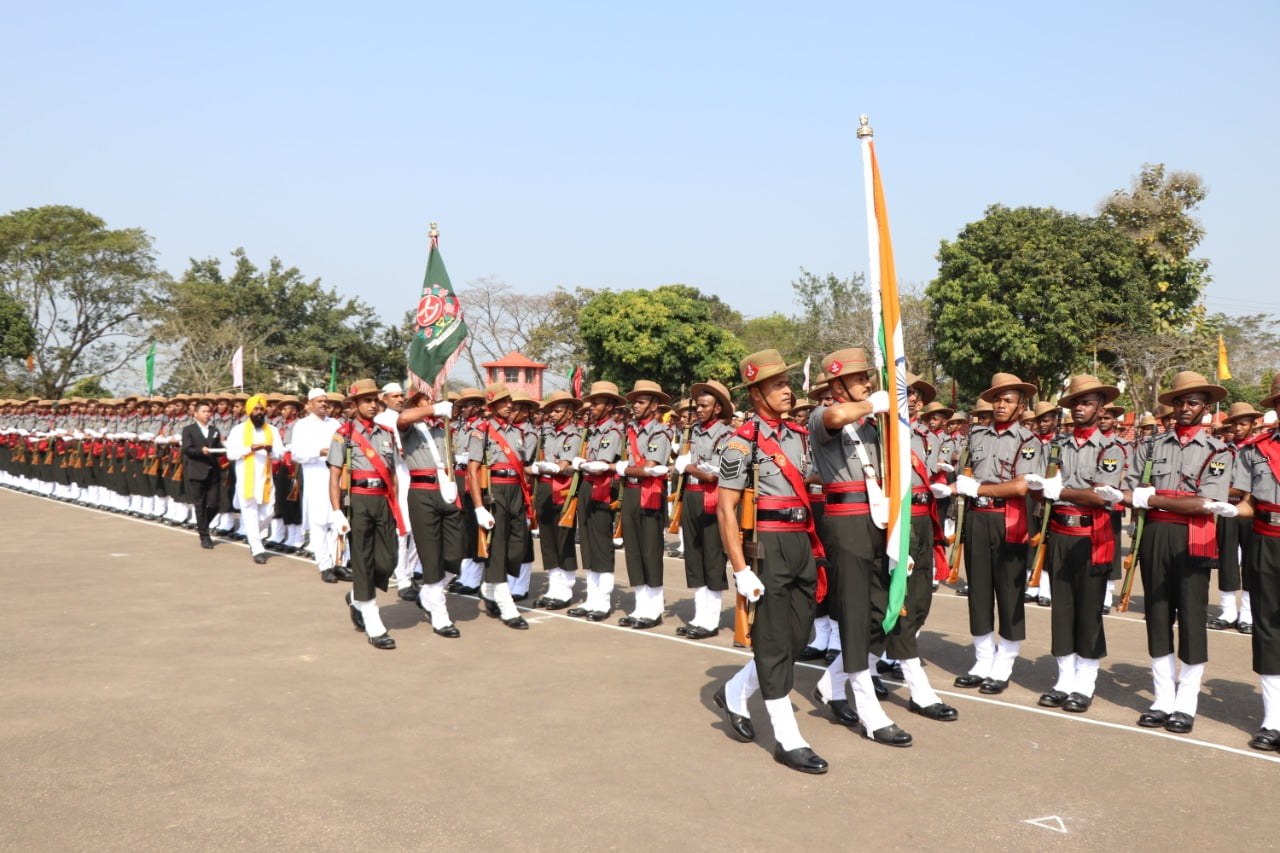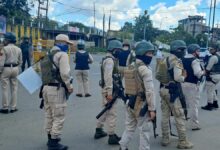Peace In The Northeast, The Army Can Hand Over Counter-Insurgency Duties To Assam Rifles

- The Assam Rifles, a paramilitary force kept in the Northeast, are now in charge of fighting against insurgencies and terrorism. The Assam Rifles is India's oldest paramilitary force.
- The above-mentioned source explained the reorientation of forces by saying that even when troops were sent to do CI/CT operations before, they always had two jobs and, if needed, would be sent to the LAC.
Insurgency caused a lot of bloodshed in India’s Northeast for decades. Now that security has improved, the Army is reducing its counter-insurgency deployment from a large number of troops to just one brigade.
At the height of the insurgency, the Army had a full-fledged Corps — 3 Corps, based in Dimapur — and several other units to fight the insurgency and terrorism. This meant that more than three Army divisions were sent to do nothing but CI/CT work.
Sources in the defence establishment said that the 3 Corps had its own three divisions plus two divisions of the Assam Rifles. This made it the biggest Corps in the Indian Army. Still, it was also in charge of the Line of Actual Control (LAC). On the LAC, an area called “Rest of Arunachal Pradesh” is in charge of by 3 Corps.
They said earlier that CI/CT also involved reserve troops from the 33 and 4 Corps under the Eastern Command and other formations, in addition to one of the divisions of the 3 Corps.
But the situation has changed dramatically over the years, as shown by the fact that the Centre removed the Armed Forces (Special Powers) Act (AFSPA) from parts of three Northeast states. As a result, the Army has almost completely pulled all of its troops from CI/CT roles in the region and given them the main task of getting ready for a conventional war.
For CI/CT operations, the Army no longer has many divisions. Instead, it only has the 73 Mountain Brigade, which is based in Laipuli, Assam. This is in addition to some other battalion-level units that are still responsible for these operations as needed.
Since 1954, this is the first time in Nagaland, Mizoram, Manipur, Tripura, Arunachal Pradesh, and Meghalaya that there is no Brigade-level Army unit doing counter-insurgency work.
The Assam Rifles, a paramilitary force kept in the Northeast, are now in charge of fighting against insurgencies and terrorism. The Assam Rifles is India’s oldest paramilitary force. It is based in Shillong and has been around since 1835, when it was called the Cachar Levy. It was made up of about 750 men, and its main job was to keep tribal raiders away from British tea estates and settlements.
After that, the Cachar Levy was reorganised and given a new name: the Frontier Force. The British also gave the Frontier Force the job of sending punishment expeditions across the border of Assam. The force was given a new name, the Assam Rifles, in 1917. The Assam Rifles, also known as the “Sentinels of the Northeast,” are made up of 46 battalions that are spread out across the whole region. Their authorised strength is 66,412 people.
“The Assam Rifles have always taken part in CI operations, but the Army was in charge of how they were done. “The Army is now putting all of its attention on the LAC, but it is still doing its job,” said retired Lt. Gen. Shokin Chauhan, who used to be the head of the Assam Rifles.
Sources said that the security situation started to change about 15 years ago, when state police forces and central armed police forces became more powerful and active. This made it possible for the Army to slowly return to its main job. They also said that the reorganisation of the Army in the Northeast started a few years ago because security had gotten better.
The Ministry of Home Affairs (MHA) says that the number of insurgencies in the Northeast has dropped by 80% in the last eight years. The MHA report also said that the number of security force deaths went down by 75%, while the number of civilian deaths went down by 99%.
Under the Narendra Modi government, there has been a big focus on making peace deals with different insurgent groups to improve overall security and to speed up talks that were started by previous governments and led to many groups signing ceasefire agreements.
As recently as September 15, the central and Assam governments signed a tripartite agreement with eight adivasi insurgent groups to end the decades-long conflict between tribals and tea garden workers in the largest state in the Northeast. On that day, as many as 1,182 members of these eight groups gave up and joined the government.
In the Northeast, the Centre and state governments have made a number of deals with extremist groups over the past three years. The NLFT (National Liberation Front of Twipra) agreement will be signed in 2019, the Bodo agreement will be signed in 2020, the Karbi Anglong agreement will be signed in 2021, and the Assam-Meghalaya Inter-State Boundary Agreement will be signed in 2022.
Sources also said that the Army’s reorientation process picked up speed after India and China got into a fight at the LAC in 2020 because of the Ladakh standoff.
The Army has made a lot of changes to the Order of Battle, which is also known as ORBAT. This included moving the 1 Corps, a Strike Corps based in Mathura and focused on Pakistan, to the northern borders.
Major changes have also been made to how the Army is used in the sensitive region of Jammu and Kashmir. A full formation has been moved to the Line of Control (LAC).
Army’s reorientation in Northeast
The Army’s Eastern Command is made up of the 33, 17, 3, and 4 Corps. These corps work in Sikkim, Arunachal Pradesh, Nagaland, Manipur, Mizoram, Tripura, Meghalaya, Assam, and Bengal.
Before a few years ago, the Northeast CI/CT operations were led by the 3 Corps. “A few years ago, the 3 Corps was moved to the LAC, and the 21 Division was in charge of CI/CT operations. “Now, the same job is done by only one Brigade,” a source said.
Sources said that the AFSPA was lifted in many places in the Northeast because the security situation had gotten better. After many years, the government said that the number of troubled areas in Nagaland, Assam, and Manipur would be cut from April 1.
The above-mentioned source explained the reorientation of forces by saying that even when troops were sent to do CI/CT operations before, they always had two jobs and, if needed, would be sent to the LAC.
“But this would have taken time, even though plans were always in place. Since the LAC is now the main focus, the troops have been permanently redirected toward the China border, and the necessary changes have been made to their deployment, a second source said.
Sources say that the 21 Para Special Forces (SF) and the 12 Para SF, both of which are part of the Eastern Command, still have two different roles, depending on the situation.
After the Doklam incident in 2017, when Indian and Chinese troops were in a standoff for almost three months, the Eastern Command has seen a big push in infrastructure, technology, and the deployment of new artillery and missile systems.
Even though India and China had a fight in eastern Ladakh, both sides have been doing more military and building work along the LAC as a whole.
In the Northeast, China is right next to Sikkim and Arunachal Pradesh. Sikkim was directly threatened by the Doklam standoff. In February, the Ministry of Defence told Parliament that the Border Road Organisation had built 149.98 km in Arunachal Pradesh and 69.46 km in Sikkim.
The Chinese, on the other hand, have sped up the building of infrastructure on their side of the LAC. This includes building new dual-role villages, which can be used for both offence and defence, especially near Arunachal Pradesh.







Facebook Comments